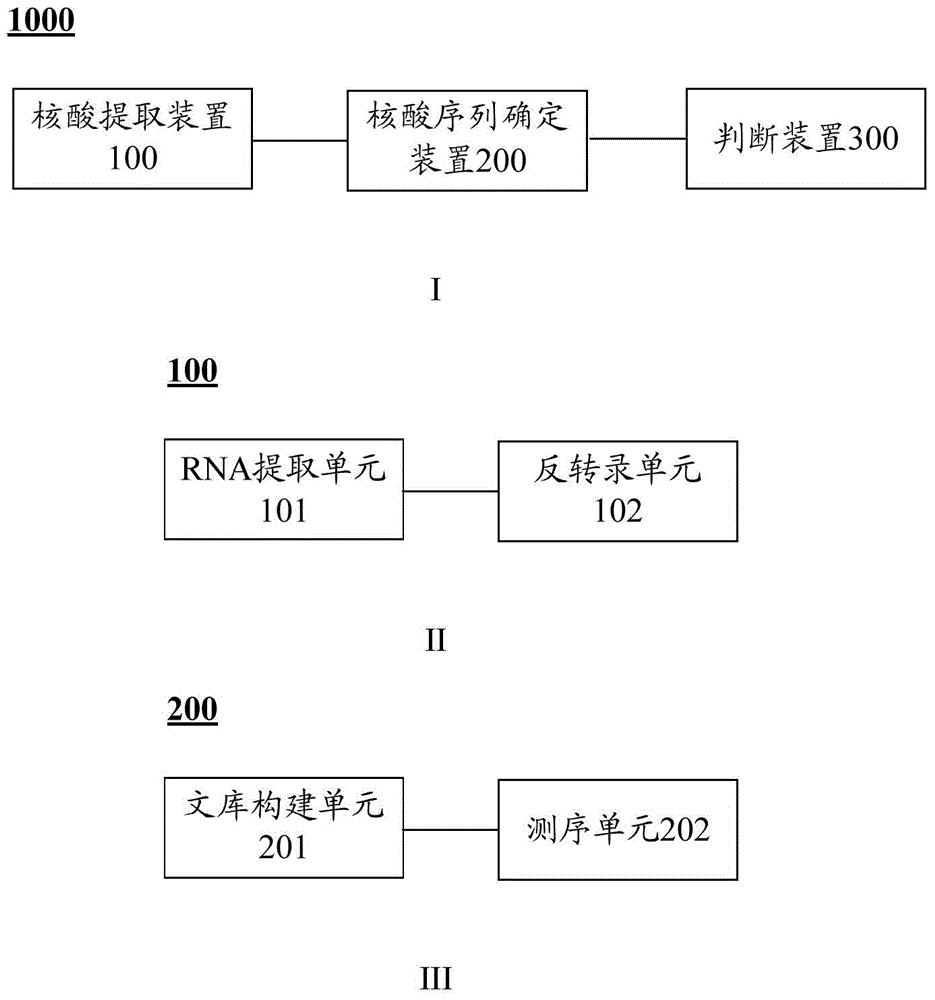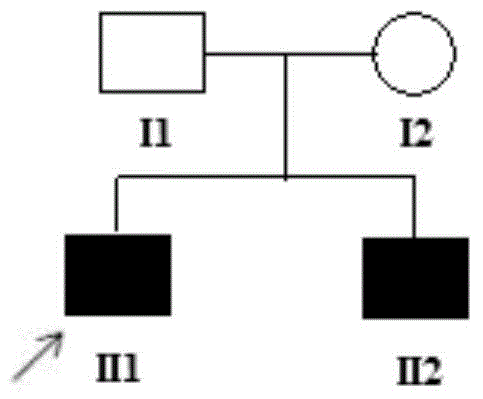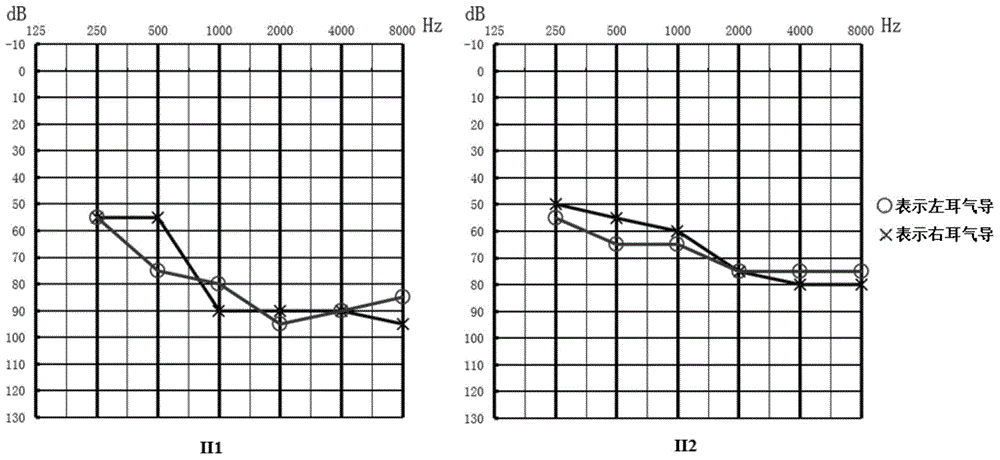PTPRQ gene mutant and application thereof
A mutant, autosomal recessive technology, applied in the field of PTPRQ gene mutants, can solve the problems of unknown etiology and need to be further developed, and achieve the effect of high early diagnosis rate
- Summary
- Abstract
- Description
- Claims
- Application Information
AI Technical Summary
Problems solved by technology
Method used
Image
Examples
Embodiment 1
[0066] Example 1 Determining the causative mutation of autosomal recessive non-syndromic deafness
[0067] 1. Sample collection
[0068] The inventor collected a 2-generation family of autosomal recessive non-synthetic deafness patients of the Han nationality in China. The pedigree is shown in figure 2 . Such as figure 2 As shown, the family contains 4 members, including 2 patients (i.e. II1 and II2 in the pedigree diagram), and 2 normal persons in the family (i.e. the parents I1 and I2 of the 2 patients, neither of whom has the disease), which meets the Autosomal recessive mode of inheritance. Among them, ○ indicates a normal female, □ indicates a normal male, ■ indicates a male patient, and the arrow points to the proband.
[0069] Among them, the pure tone audiometry results of two patients in this family are shown in image 3 . exist image 3 In , the abscissa indicates the frequency of the pure tone, and the ordinate indicates the hearing level. If the hearing th...
Embodiment 2
[0084] Example 2 Sanger method sequencing verification
[0085] The PTPRQ gene of all family members (comprising 2 patients and 2 normal family members) in the autosomal recessive non-synthetic deafness patient family described in embodiment 1 and 328 randomly selected normal people outside the family respectively Detection: design primers for the c.3125A>G and c.5981A>G mutations of the PTPRQ gene, and then obtain the relevant sequence of the mutation site by PCR amplification, product purification and sequencing, and determine whether the result of the sequence determination belongs to the mutant type or Wild type, to verify the correlation between the c.3125A>G and c.5981A>G mutations of the PTPRQ gene and autosomal recessive non-syndromic deafness.
[0086] The specific method steps are as follows:
[0087] 1. DNA extraction
[0088] According to the method for extracting DNA described in Example 1, the genomic DNA in the peripheral venous blood of the subject was extrac...
Embodiment 3
[0102] Example 3 Detection Kit
[0103] Prepare a detection kit, which comprises primers capable of detecting the c.3125A>G and c.5981A>G mutations of the PTPRQ gene, for screening biological samples susceptible to autosomal recessive non-synthetic deafness, wherein these primers are PTPRQ Gene exon-specific primers, the sequences of which are shown in SEQ ID NO: 3-6 in Example 2.
[0104] The specific steps for using the above kit to screen biological samples susceptible to autosomal recessive non-synthetic deafness are: extract the DNA of the test subject according to the method described in step 2 of Example 1, and use the extracted DNA as a template to combine with the above PTPRQ The exon-specific primers of the gene were subjected to PCR reaction (see Example 2 for the PCR reaction system and reaction conditions), and the PCR product was purified according to conventional methods in the art, and the purified product was sequenced, and then the sequence obtained by observ...
PUM
 Login to View More
Login to View More Abstract
Description
Claims
Application Information
 Login to View More
Login to View More - R&D
- Intellectual Property
- Life Sciences
- Materials
- Tech Scout
- Unparalleled Data Quality
- Higher Quality Content
- 60% Fewer Hallucinations
Browse by: Latest US Patents, China's latest patents, Technical Efficacy Thesaurus, Application Domain, Technology Topic, Popular Technical Reports.
© 2025 PatSnap. All rights reserved.Legal|Privacy policy|Modern Slavery Act Transparency Statement|Sitemap|About US| Contact US: help@patsnap.com



